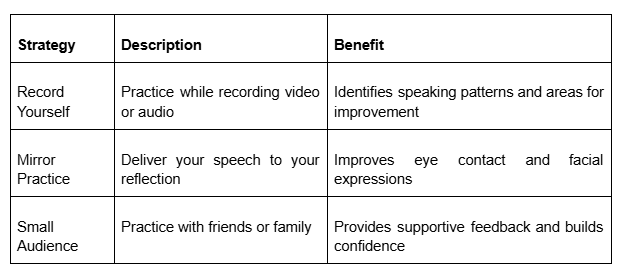Effective Public Speaking Anxiety Management
By PAGE Editor
How to Calm Nerves Before Public Speaking
Public speaking ranks among the most common fears people experience. The mere thought of standing before an audience can trigger intense anxiety, a racing heartbeat, and even physical discomfort. Yet effective communication skills, particularly public speaking, remain crucial for professional and personal development.
This challenge affects people across all walks of life, including in Poland, where business presentations and academic speeches are integral parts of professional life. Just as players at the Vulkan Bet casino learn strategies to manage pressure during high-stakes moments, speakers can develop techniques to remain composed during presentations. With the right approach, anyone can learn to manage speaking anxiety and deliver presentations with confidence.
Understanding Public Speaking Anxiety
Speech anxiety, or glossophobia, affects an estimated 75% of the population. This response stems from our evolutionary past, where being judged by a group could lead to social rejection—a serious threat to survival in ancient times.
When facing an audience, your body might respond with:
Increased heart rate and blood pressure
Shallow breathing or breathlessness
Sweating and trembling
Dry mouth or difficulty speaking
Digestive discomfort
These physical responses are triggered by the same fight-or-flight mechanism that protected our ancestors from physical dangers. Understanding that these reactions are normal can help you begin to manage them effectively.
Preparation Techniques
Thorough preparation forms the foundation of speaking confidence. When you know your material inside and out, anxiety naturally diminishes.
Start preparation well in advance of your speaking engagement. Structure your presentation with a clear introduction, main points, and conclusion. Consider creating speaking notes rather than writing out your entire speech—this prevents the robotic delivery that often results from reading a script.
Each practice session builds your familiarity with the material and increases your confidence for the actual presentation.
Physical Relaxation Methods
Physical techniques can effectively reduce anxiety symptoms before and during presentations.
Progressive muscle relaxation involves systematically tensing and then releasing different muscle groups throughout your body. This practice reduces physical tension and creates awareness of the difference between tense and relaxed states.
Breathing exercises are particularly effective for quick anxiety reduction:
Box breathing: Inhale for 4 counts, hold for 4, exhale for 4, hold for 4
4-7-8 technique: Inhale for 4 counts, hold for 7, exhale for 8
Diaphragmatic breathing: Focus on deep belly breathing rather than shallow chest breathing
Light physical activity before your presentation—like a brisk walk or gentle stretching—can help release tension and reduce excess nervous energy.
Mental Preparation Strategies
Your mental approach significantly impacts your speaking experience. Visualization—mentally rehearsing a successful presentation—programs your mind for positive outcomes.
Replace negative self-talk ("I'll forget everything" or "They'll judge me") with positive affirmations ("I am well-prepared" or "My message is valuable"). This cognitive reframing can transform your experience.
Another powerful technique involves reframing anxiety as excitement. The physiological responses are nearly identical, but excitement has positive connotations while anxiety has negative ones. Simply telling yourself "I'm excited" rather than "I'm nervous" can improve performance.
Day-of-Speech Strategies
Arrive at your speaking venue early to familiarize yourself with the space and test any technology you'll be using. This eliminates last-minute stressors and allows you to focus on your delivery.
Develop a pre-speech routine that might include:
Gentle warm-up exercises for your voice and body
A moment of quiet meditation or focused breathing
Reviewing your key points and opening lines
Drinking water (avoid caffeine, which can increase anxiety)
Right before speaking, take several deep breaths and remind yourself that the audience wants you to succeed.
Professional Development Resources
In major Polish cities like Warsaw, Kraków, and Wrocław, Toastmasters clubs offer supportive environments to practice public speaking regularly. These clubs provide structured feedback to help members improve their communication skills.
Universities and continuing education centers throughout Poland frequently offer public speaking workshops. These courses provide structured learning environments and opportunities to practice with peers who share similar goals.
Additionally, numerous books and online courses can supplement your practice. Look for resources that emphasize practical techniques rather than abstract concepts.
Building Long-term Confidence
Developing speaking confidence is a journey rather than a destination. Each speaking opportunity, regardless of size, builds experience and reduces anxiety over time.
After presentations, reflect on what went well rather than dwelling on mistakes. Consider asking a trusted colleague for specific, constructive feedback that you can apply to future presentations.
Celebrate your progress, no matter how small. Even managing to maintain eye contact more consistently or reducing filler words represents meaningful improvement.
Remember that even professional speakers experience nervousness—they've simply learned to channel that energy into engaging, dynamic presentations. With practice and perseverance, you too can transform speaking anxiety into powerful, effective communication that advances your personal and professional goals.
HOW DO YOU FEEL ABOUT FASHION?
COMMENT OR TAKE OUR PAGE READER SURVEY
Featured








In a season where personal style defines everything from attitude to ambition, one brand continues to light up the streets like wildfire.